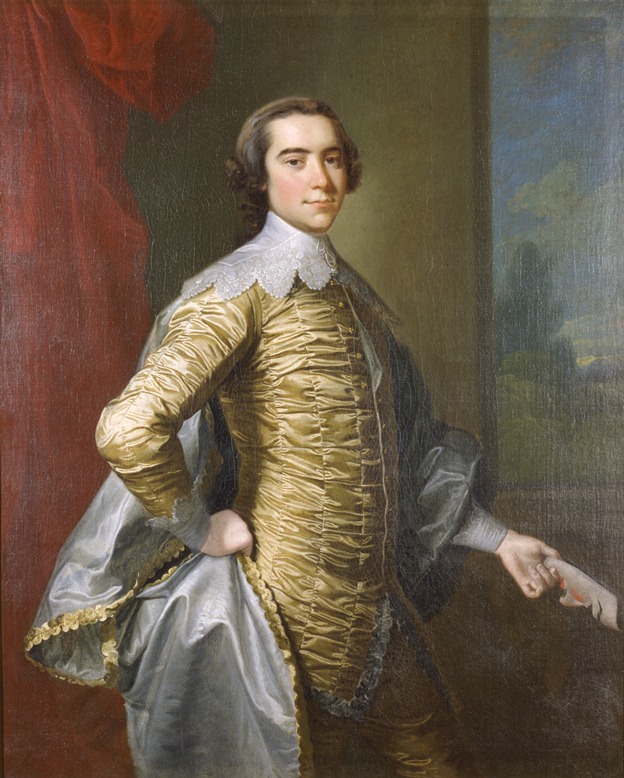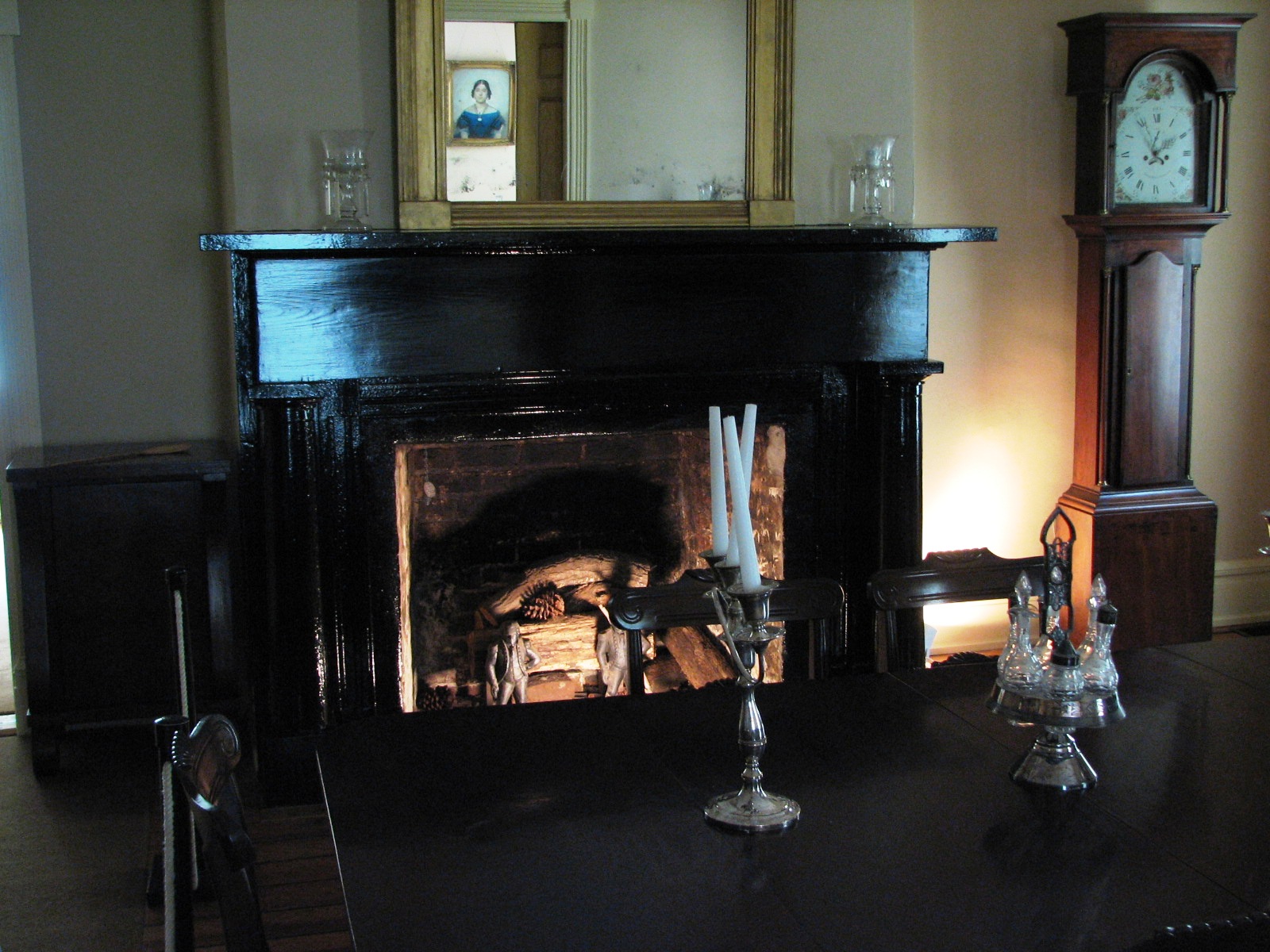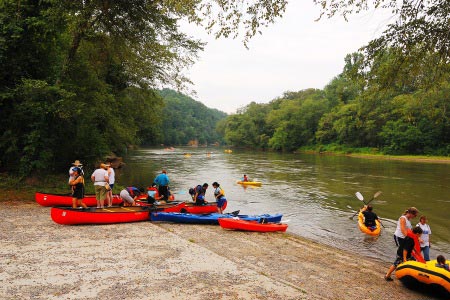|
Martha Bulloch Roosevelt
Martha Stewart "Mittie" Roosevelt ( Bulloch; July 8, 1835 – February 14, 1884) was an American socialite. She was the mother of U.S. President Theodore Roosevelt and the paternal grandmother of Eleanor Roosevelt. She was a great-granddaughter of Archibald Bulloch, grandniece of William Bellinger Bulloch, and granddaughter of General Daniel Stewart. A true Southern belle raised in Georgia, Roosevelt is thought to have been one of the inspirations for Scarlett O'Hara.McCullouch, pg. 47. Childhood Mittie was born in Hartford, Connecticut on July 8, 1835, to Major James Stephens Bulloch (1793–1849) and Martha "Patsy" Stewart (1799–1864). She had an elder sister, Anna Louisa Bulloch (1833–1893), and two younger brothers, Charles Irvine Bulloch (1838–1841) and Civil War Confederate veteran Irvine Stephens Bulloch (1842–1898). Through her father's first marriage to Hester Amarintha "Hettie" Elliott (1797–1831), she had two elder half brothers: *John Elliott Bulloch (181 ... [...More Info...] [...Related Items...] OR: [Wikipedia] [Google] [Baidu] |
Hartford, Connecticut
Hartford is the capital city of the U.S. state of Connecticut. It was the seat of Hartford County until Connecticut disbanded county government in 1960. It is the core city in the Greater Hartford metropolitan area. Census estimates since the 2010 United States census have indicated that Hartford is the fourth-largest city in Connecticut with a 2020 population of 121,054, behind the coastal cities of Bridgeport, New Haven, and Stamford. Hartford was founded in 1635 and is among the oldest cities in the United States. It is home to the country's oldest public art museum ( Wadsworth Atheneum), the oldest publicly funded park ( Bushnell Park), the oldest continuously published newspaper (the ''Hartford Courant''), and the second-oldest secondary school ( Hartford Public High School). It is also home to the Mark Twain House, where the author wrote his most famous works and raised his family, among other historically significant sites. Mark Twain wrote in 1868, "Of all the ... [...More Info...] [...Related Items...] OR: [Wikipedia] [Google] [Baidu] |
James Dunwoody Bulloch
James Dunwoody Bulloch (June 25, 1823 – January 7, 1901) was the Confederate States of America, Confederacy's chief foreign agent in Great Britain during the American Civil War. Based in Liverpool, he operated Blockade runners of the American Civil War, blockade runners and commerce raiders that provided the Confederacy with its only source of hard currency. Bulloch arranged for the purchase by British merchants of Confederate cotton, as well as the dispatch of armaments and other war supplies to the South. His secret service funds are alleged to have been used to plan the assassination of Abraham Lincoln. Bulloch's half-sister Martha Bulloch Roosevelt, Martha was the mother of U.S. President Theodore Roosevelt and paternal grandmother of First Lady Eleanor Roosevelt. Birth and early years James D. Bulloch was born in 1823 on his family's plantation near Savannah, Georgia, to Major James Stephens Bulloch (son of Captain James Bulloch and Ann Irvine) and Hester Amarintha Ell ... [...More Info...] [...Related Items...] OR: [Wikipedia] [Google] [Baidu] |
Slavery In The United States
The legal institution of human Slavery#Chattel slavery, chattel slavery, comprising the enslavement primarily of List of ethnic groups of Africa, Africans and African Americans, was prevalent in the United States, United States of America from its founding in 1776 until 1865, predominantly in the Southern United States, South. Slavery was established throughout European colonization of the Americas, European colonization in the Americas. From 1526, during early Slavery in the colonial history of the United States, colonial days, it was practiced in what became British America, Britain's colonies, including the Thirteen Colonies that formed the United States. Under the law, an enslaved person was treated as property that could be bought, sold, or given away. Slavery lasted in about half of U.S. states until Thirteenth Amendment to the United States Constitution, abolition. In the decades after the end of Reconstruction era, Reconstruction, many of slavery's economic and soci ... [...More Info...] [...Related Items...] OR: [Wikipedia] [Google] [Baidu] |
Planter Class
The planter class, known alternatively in the United States as the Southern aristocracy, was a racial and socioeconomic caste of pan-American society that dominated 17th and 18th century agricultural markets. The Atlantic slave trade permitted planters access to inexpensive African slave labor for the planting and harvesting of crops such as tobacco, cotton, indigo, coffee, tea, cocoa, sugarcane, sisal, oil seeds, oil palms, hemp, rubber trees, and fruits. Planters were considered part of the American gentry. In the Southern United States, planters maintained a distinct culture, which was characterized by its similarity to the manners and customs of the British nobility and gentry. The culture had an emphasis on chivalry, gentility, and hospitality. The culture of the Southern United States, with its landed plantocracy, was distinctly different from areas north of the Mason–Dixon line and west of the Appalachian Mountains. The northern and western areas were charac ... [...More Info...] [...Related Items...] OR: [Wikipedia] [Google] [Baidu] |
National Register Of Historic Places
The National Register of Historic Places (NRHP) is the United States federal government's official list of districts, sites, buildings, structures and objects deemed worthy of preservation for their historical significance or "great artistic value". A property listed in the National Register, or located within a National Register Historic District, may qualify for tax incentives derived from the total value of expenses incurred in preserving the property. The passage of the National Historic Preservation Act (NHPA) in 1966 established the National Register and the process for adding properties to it. Of the more than one and a half million properties on the National Register, 95,000 are listed individually. The remainder are contributing resources within historic districts. For most of its history, the National Register has been administered by the National Park Service (NPS), an agency within the U.S. Department of the Interior. Its goals are to help property owners a ... [...More Info...] [...Related Items...] OR: [Wikipedia] [Google] [Baidu] |
Antebellum Architecture
Antebellum architecture (meaning "prewar", from the Latin ''ante'', "before", and '' bellum'', "war") is the neoclassical architectural style characteristic of the 19th-century Southern United States, especially the Deep South, from after the birth of the United States with the American Revolution, to the start of the American Civil War. Antebellum architecture is especially characterized by Georgian, Neo-classical, and Greek Revival style homes and mansions. These plantation houses were built in the southern American states during roughly the thirty years before the American Civil War; approximately between the 1830s to 1860s. Key features Exterior: The main characteristics of antebellum architecture viewed from the outside of the house often included huge pillars, a balcony that ran along the whole outside edge of the house created a porch that offers shade and a sitting area, evenly spaced large windows, and big center entrances at the front and rear of the house to add ... [...More Info...] [...Related Items...] OR: [Wikipedia] [Google] [Baidu] |
Bulloch Hall
Bulloch Hall is a Greek Revival mansion in Roswell, Georgia, built in 1839. It is one of several historically significant buildings in the city and is listed on the National Register of Historic Places. This is where Martha Bulloch Roosevelt ("Mittie"), mother of Theodore Roosevelt, 26th U.S. president, lived as a child. It is also where she married Theodore Roosevelt's father, Theodore Roosevelt, Sr. The Roosevelt family are descendants of Archibald Bulloch, the first Governor of Georgia (1730-1777). The antebellum mansion was built by Mittie's father, Major James Stephens Bulloch. He was a prominent planter from the Georgia coast, who was invited to the new settlement by his friend Roswell King. After the death of his first wife Hester Amarintha "Hettie" Elliott - mother of his son James D. Bulloch - Bulloch married the widow of his first wife's father, Martha "Patsy" Stewart Elliot, and had four more children: * Anna Bulloch * Martha Bulloch * Charles Bulloch (who died ... [...More Info...] [...Related Items...] OR: [Wikipedia] [Google] [Baidu] |
Roswell King
Roswell King (May 3, 1765 – February 15, 1844) was an American enslaver, plantation manager, businessman, planter, and industrialist. Together with his son, Barrington King, he founded Roswell Manufacturing Company in the Georgia Piedmont, establishing a cotton mill and industrial complex. They co-founded the town of Roswell, Georgia, inviting friends to be part of its and the mill's development in the 1830s. Roswell's family originally hailed from Delaware but later moved to Connecticut where they were among the first residents of New Haven and later Windsor. As a teen, Roswell participated in the American Revolutionary War as part of the naval resistance before moving to Georgia's low country. Early life King was born in Windsor, Connecticut, in 1765, the son of Timothy King, a weaver and Revolutionary naval commander, and Sarah (née Fitch) King. At the age of fifteen in 1780, he moved to Darien, Georgia, in the Low Country and started working. His early professional life inc ... [...More Info...] [...Related Items...] OR: [Wikipedia] [Google] [Baidu] |
Georgia (U
Georgia most commonly refers to: * Georgia (country), a country in the Caucasus region of Eurasia * Georgia (U.S. state), a state in the Southeast United States Georgia may also refer to: Places Historical states and entities * Related to the country in the Caucasus ** Kingdom of Georgia, a medieval kingdom ** Georgia within the Russian Empire ** Democratic Republic of Georgia, established following the Russian Revolution ** Georgian Soviet Socialist Republic, a constituent of the Soviet Union * Related to the US state ** Province of Georgia, one of the thirteen American colonies established by Great Britain in what became the United States ** Georgia in the American Civil War, the State of Georgia within the Confederate States of America. Other places * 359 Georgia, an asteroid * New Georgia, Solomon Islands * South Georgia and the South Sandwich Islands Canada * Georgia Street, in Vancouver, British Columbia, Canada * Strait of Georgia, British Columbia, Canada ... [...More Info...] [...Related Items...] OR: [Wikipedia] [Google] [Baidu] |
Atlanta, Georgia
Atlanta ( ) is the capital and most populous city of the U.S. state of Georgia. It is the seat of Fulton County, the most populous county in Georgia, but its territory falls in both Fulton and DeKalb counties. With a population of 498,715 living within the city limits, it is the eighth most populous city in the Southeast and 38th most populous city in the United States according to the 2020 U.S. census. It is the core of the much larger Atlanta metropolitan area, which is home to more than 6.1 million people, making it the eighth-largest metropolitan area in the United States. Situated among the foothills of the Appalachian Mountains at an elevation of just over above sea level, it features unique topography that includes rolling hills, lush greenery, and the most dense urban tree coverage of any major city in the United States. Atlanta was originally founded as the terminus of a major state-sponsored railroad, but it soon became the convergence point among severa ... [...More Info...] [...Related Items...] OR: [Wikipedia] [Google] [Baidu] |
Chattahoochee River
The Chattahoochee River forms the southern half of the Alabama and Georgia border, as well as a portion of the Florida - Georgia border. It is a tributary of the Apalachicola River, a relatively short river formed by the confluence of the Chattahoochee and Flint rivers and emptying from Florida into Apalachicola Bay in the Gulf of Mexico. The Chattahoochee River is about long. The Chattahoochee, Flint, and Apalachicola rivers together make up the Apalachicola–Chattahoochee–Flint River Basin ( ACF River Basin). The Chattahoochee makes up the largest part of the ACF's drainage basin. Course The source of the Chattahoochee River is located in Jacks Gap at the southeastern foot of Jacks Knob, in the very southeastern corner of Union County, in the southern Blue Ridge Mountains, a subrange of the Appalachian Mountains. The headwaters of the river flow south from ridges that form the Tennessee Valley Divide. The Appalachian Trail crosses the river's uppermost headwaters. ... [...More Info...] [...Related Items...] OR: [Wikipedia] [Google] [Baidu] |
Roswell, Georgia
Roswell is a city in northern Fulton County, Georgia, United States. At the official 2010 census, the city had a population of 88,346. The 2020 estimated population was 94,884, making Roswell the state's ninth largest city. A close suburb of Atlanta, Roswell has an affluent historic district. History In 1830, while on a trip to northern Georgia, Roswell King passed through the area of what is now Roswell and observed the great potential for building a cotton mill along Vickery Creek. Since the land nearby was also good for plantations, he planned to put cotton processing near cotton production. Toward the middle of the 1830s, King returned to build a mill that would soon become the largest in north Georgia – Roswell Mill. He brought with him 36 African slaves from his own coastal plantation, plus another 42 skilled carpenter slaves bought in Savannah to build the mills. The slaves built the mills, infrastructure, houses, mill worker apartments, and supporting build ... [...More Info...] [...Related Items...] OR: [Wikipedia] [Google] [Baidu] |






